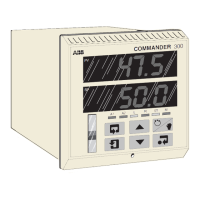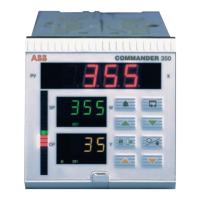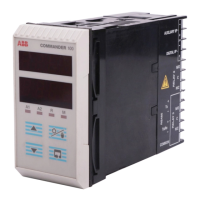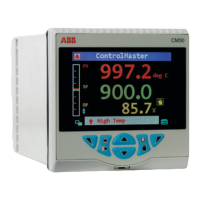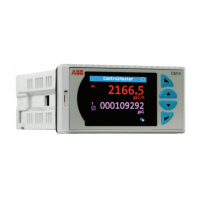107
6 INSTALLATION…
…6.2.1 Electrical Connections – Figs 6.6 to 6.8
* Using internal transmitter power supply
** Use 100Ω shunt resistor provided with instrument
*** For correct broken sensor operation with voltage inputs, fit a 100KΩ pull-up resistor
# Fit the CJ sensor supplied if I/P1 or I/P2 are THC inputs
## I/P2 can only be used with THC inputs if I/P1 is also used as a THC input
### Fit the CJ sensor supplied if I/P3 is a THC input
–
+
THC
millivolts
and volts
RTD –
3
rd
lead
RTD
+
3-lead
RTD
–
+
milliamps
28
29
30
31
–
+
* milliamps
2-wire
Transmitter
RTD –
RTD –
RTD +
2-lead RTD
and Resistance
**100Ω
**100Ω
Tx
Milliamps
–
+
**100Ω
–
+
2-wire
Transmitter
**100Ω
–
+
Millivolts
Tx
32
36
CJ Sensor#
THC##
–
+
Analog
Input 1
(I/P 1)
Analog
Input 2
(I/P 2)
–
+
THC
milliVolts
and volts
RTD –
3
rd
lead
RTD
+
3-lead
RTD
–
+
milliAmps
33
34
35
–
+
* milliAmps
2-wire
Transmitter
RTD –
RTD –
RTD +
2-lead RTD
and Resistance
**100Ω
**100Ω
Tx
CJ Sensor###
Analog
Input 3
(I/P 3)
Transmitter
Power
Supply
* milliAmps
***
100KΩ
***
100KΩ
voltage
Volt-free
Inactive
Active
TTL
Inactive
Active
5V
0V
Fig. 6.7 Electrical Connections – Analog Inputs
Fig. 6.8 Electrical Connections – Digital Inputs
Note. The battery is a 3 Volt non-replaceable lithium cell.

